http://www.bloggingtothebank.com
How SEOPressor Can Save Your Optimization Time Immensely
SEOPressor is a tool that is used by people all over the world for their on-page optimization needs. Simply put, this is a program that can definitely elevate the standard of your website, in the manner that it helps your website reach out on the Internet. The simple logic here is that if your website can reach out to more people, it will have more business, and that’s exactly what SEOPressor helps you achieve. As you get even the top position on Google within your niche—which is something that SEOPressor has achieved time and again—it becomes very a given that your business prospects are only going to improve.
The one fact is—you are going to optimize your website in some way or the other, with or without a software application. But if you are planning to do things manually, the big drawback is that you won’t get the time to pursue your main business itself. SEO is a highly time-consuming activity, and you will find yourself wasting a great deal of time in blogging, marketing with articles, submitting to directories, sending emails to other webmasters for sharing links with them and so on.
Naturally, these things are going to take a lot of your time. Now just think—if you would just delegate all this work to a tool like SEOPressor, won’t you be saving some immense amount of time? Time that you could better use in increasing your business?
Probably it is this thought that is making a lot of people invest in SEOPressor today. The following are some time-consuming things that SEOPressor can do for webmasters:-
1. It finds out the hottest keywords on the Internet and tells you how you can use them. It keeps monitoring the keywords and continuously makes suggestions. It also tells you what density you should use the keyword in and what special formatting you need to keep it. All these things could be very time-consuming if done manually.
2. The program also looks at the tags you have used and makes suggestions on how to improve prospects. It makes suggestions on which tagging formats should be used—H1, H2 or H3—and carries it out by itself.
3. If you run a blog, SEOPressor will look at your individual posts and suggest changes if anything is wrong. It also tells you the value of each of your existing posts.
So, it is not just about optimizing your on-page needs but it is also about actually suggesting changes. The program is quite faithful to you; like an obedient animal it will do your bidding and improve the chances of your website on the Internet.
http://www.bloggingtothebank.com
Saturday, July 31, 2010
Sunday, July 4, 2010
The Windows Installer service could not be accessed
The Windows Installer service could not be accessed
Error message when you try to add or remove a program on a computer that is running Windows XP or Windows Server 2003: "The Windows Installer service could not be accessed"
When you try to install a software application on Windows XP or Windows Server 2003, you may receive the following error message:
SYMPTOMS
The Windows Installer Service could not be accessed. This can occur if you are running Windows in safe mode, or if the Windows Installer is not correctly installed. Contact your support personnel for assistance.
Note: This problem may also occur when you try to uninstall a software application.
CAUSE :
This problem may occur if one of the following conditions is true:
* The Windows Installer files that are on your hard disk are damaged or are missing.
* You install or remove a program that uses the Windows Installer Microsoft Software Installation (MSI) package file (.msi). For example, this may occur when you try to install Microsoft Office on your computer.
SOLUTION (ad advised by Microsoft)
Method 1: Reregister the Windows Installer
To reregister the Windows Installer, verify the location of the Msiexec.exe file on your hard disk and in the Windows Registry, and then reregister the Windows Installer. To do this, follow these steps.
Note Because there are several versions of Microsoft Windows, the following steps may be different on your computer. If they are, see your product documentation to complete these steps.
1. Determine the location of the Msiexec.exe file on your hard disk. To do this, follow these steps:
1. Click Start, click Run, type %windir%\system32, and then click OK.
Note This step will open the folder where the Msiexec.exe file is located.
2. Make a note of the location of the Msiexec.exe file. The location of the Msiexec.exe file will be a combination of the value in the Address text box and the Msiexec.exe file name itself.
For example if the Address text box contains a value of C:\Windows\system32, the location of the Msiexec.exe file will be C:\Windows\system32\Msiexec.exe.
2. Important This section, method, or task contains steps that tell you how to modify the registry. However, serious problems might occur if you modify the registry incorrectly. Therefore, make sure that you follow these steps carefully. For added protection, back up the registry before you modify it. Then, you can restore the registry if a problem occurs. For more information about how to back up and restore the registry, click the following article number to view the article in the Microsoft Knowledge Base:
322756 (http://support.microsoft.com/kb/322756/ ) How to back up and restore the registry in Windows
Make sure that the location of the Msiexec.exe file in Registry Editor is correct. To do this, follow these steps:
1. Click Start, click Run, type regedit in the Open text box, and then click OK.
2. Expand HKEY_LOCAL_MACHINE, expand SYSTEM, expand CurrentControlSet, expand Services, and then click MSIServer.
3. In the right pane, right-click ImagePath, and then click Modify.
4. In the Value data text box, type the location of the Msiexec.exe file that you determined in step 1, followed by the value of /V, and then click OK.
For example, if the location of the Msiexec.exe file is C:\Windows\system32\Msiexec.exe, type the following text in the Value data text box:
C:\WINDOWS\System32\msiexec.exe /V
5. Click OK to close the Edit String dialog box.
6. Click the File menu, and then click Exit to close Registry Editor.
3. Start your computer in safe mode, and then register the Msiexec.exe file. To do this, follow these steps:
1. Click Start, and then click Turn off computer or Shut Down.
2. Select the Restart option, and then click OK, or click Restart.
3. Press F8 before the Windows splash screen appears.
4. On the Windows Advanced Option menu, use the arrow keys to select the Safe Mode option, and then press ENTER.
5. If you use a dual-boot or multiple-boot computer, select the appropriate operating system from the list that is displayed, and then press ENTER.
6. Log on to the computer.
7. Click Start, click Run, type msiexec /regserver in the Open text box, and then click OK.
Note For 64-bit operating systems, you also have to reregister the 64-bit MSI installer. To do this, click Start, click Run, type %windir%\Syswow64\Msiexec /regserver in the Open text box, and then click OK.
On 64-bit editions of the Windows operating system, 32-bit binaries are located in %systemroot%\SysWow64 folder. The 64-bit binaries are located in the %systemroot%\System32 folder.
8. Click Start, and then click Turn off computer or Shut Down.
9. Select the Restart option, and then click OK, or click Restart.
If the issue persists, and you still receive the error message that is mentioned in the "Symptoms" section, follow the steps in Method 2.
Back to the top
Method 2: Reinstall the Windows Installer
To reinstall the Windows Installer, rename the damaged Windows Installer files, and then reinstall the Windows Installer. To do this, follow these steps:
1. Click Start, click Run, type cmd in the Open text box, and then click OK.
2. Type cd %windir%\system32, and then press ENTER.
3. Type attrib -r -s -h dllcache, and then press ENTER.
4. Type ren msi.dll msi.old, and then press ENTER.
5. Type ren msiexec.exe msiexec.old, and then press ENTER.
6. Type ren msihnd.dll msihnd.old, and then press ENTER.
7. Type exit, and then press ENTER.
8. At the command prompt, type exit, and then press ENTER.
9. Click Start, and then click Turn off computer or Shut Down.
10. Select the Restart option, and then click OK, or click Restart.
11. Log on to the computer.
12. Download and install the latest version of the Windows Installer. For more information about how to obtain the Windows Installer, click the following article number to view the article in the Microsoft Knowledge Base:
893803 (http://support.microsoft.com/kb/893803/ ) Windows Installer 3.1 v2 (3.1.4000.2435) is available
13. Click Start, and then click Turn off computer or Shut Down.
14. Select the Restart option, and then click OK, or click Restart.
Error message when you try to add or remove a program on a computer that is running Windows XP or Windows Server 2003: "The Windows Installer service could not be accessed"
When you try to install a software application on Windows XP or Windows Server 2003, you may receive the following error message:
SYMPTOMS
The Windows Installer Service could not be accessed. This can occur if you are running Windows in safe mode, or if the Windows Installer is not correctly installed. Contact your support personnel for assistance.
Note: This problem may also occur when you try to uninstall a software application.
CAUSE :
This problem may occur if one of the following conditions is true:
* The Windows Installer files that are on your hard disk are damaged or are missing.
* You install or remove a program that uses the Windows Installer Microsoft Software Installation (MSI) package file (.msi). For example, this may occur when you try to install Microsoft Office on your computer.
SOLUTION (ad advised by Microsoft)
Method 1: Reregister the Windows Installer
To reregister the Windows Installer, verify the location of the Msiexec.exe file on your hard disk and in the Windows Registry, and then reregister the Windows Installer. To do this, follow these steps.
Note Because there are several versions of Microsoft Windows, the following steps may be different on your computer. If they are, see your product documentation to complete these steps.
1. Determine the location of the Msiexec.exe file on your hard disk. To do this, follow these steps:
1. Click Start, click Run, type %windir%\system32, and then click OK.
Note This step will open the folder where the Msiexec.exe file is located.
2. Make a note of the location of the Msiexec.exe file. The location of the Msiexec.exe file will be a combination of the value in the Address text box and the Msiexec.exe file name itself.
For example if the Address text box contains a value of C:\Windows\system32, the location of the Msiexec.exe file will be C:\Windows\system32\Msiexec.exe.
2. Important This section, method, or task contains steps that tell you how to modify the registry. However, serious problems might occur if you modify the registry incorrectly. Therefore, make sure that you follow these steps carefully. For added protection, back up the registry before you modify it. Then, you can restore the registry if a problem occurs. For more information about how to back up and restore the registry, click the following article number to view the article in the Microsoft Knowledge Base:
322756 (http://support.microsoft.com/kb/322756/ ) How to back up and restore the registry in Windows
Make sure that the location of the Msiexec.exe file in Registry Editor is correct. To do this, follow these steps:
1. Click Start, click Run, type regedit in the Open text box, and then click OK.
2. Expand HKEY_LOCAL_MACHINE, expand SYSTEM, expand CurrentControlSet, expand Services, and then click MSIServer.
3. In the right pane, right-click ImagePath, and then click Modify.
4. In the Value data text box, type the location of the Msiexec.exe file that you determined in step 1, followed by the value of /V, and then click OK.
For example, if the location of the Msiexec.exe file is C:\Windows\system32\Msiexec.exe, type the following text in the Value data text box:
C:\WINDOWS\System32\msiexec.exe /V
5. Click OK to close the Edit String dialog box.
6. Click the File menu, and then click Exit to close Registry Editor.
3. Start your computer in safe mode, and then register the Msiexec.exe file. To do this, follow these steps:
1. Click Start, and then click Turn off computer or Shut Down.
2. Select the Restart option, and then click OK, or click Restart.
3. Press F8 before the Windows splash screen appears.
4. On the Windows Advanced Option menu, use the arrow keys to select the Safe Mode option, and then press ENTER.
5. If you use a dual-boot or multiple-boot computer, select the appropriate operating system from the list that is displayed, and then press ENTER.
6. Log on to the computer.
7. Click Start, click Run, type msiexec /regserver in the Open text box, and then click OK.
Note For 64-bit operating systems, you also have to reregister the 64-bit MSI installer. To do this, click Start, click Run, type %windir%\Syswow64\Msiexec /regserver in the Open text box, and then click OK.
On 64-bit editions of the Windows operating system, 32-bit binaries are located in %systemroot%\SysWow64 folder. The 64-bit binaries are located in the %systemroot%\System32 folder.
8. Click Start, and then click Turn off computer or Shut Down.
9. Select the Restart option, and then click OK, or click Restart.
If the issue persists, and you still receive the error message that is mentioned in the "Symptoms" section, follow the steps in Method 2.
Back to the top
Method 2: Reinstall the Windows Installer
To reinstall the Windows Installer, rename the damaged Windows Installer files, and then reinstall the Windows Installer. To do this, follow these steps:
1. Click Start, click Run, type cmd in the Open text box, and then click OK.
2. Type cd %windir%\system32, and then press ENTER.
3. Type attrib -r -s -h dllcache, and then press ENTER.
4. Type ren msi.dll msi.old, and then press ENTER.
5. Type ren msiexec.exe msiexec.old, and then press ENTER.
6. Type ren msihnd.dll msihnd.old, and then press ENTER.
7. Type exit, and then press ENTER.
8. At the command prompt, type exit, and then press ENTER.
9. Click Start, and then click Turn off computer or Shut Down.
10. Select the Restart option, and then click OK, or click Restart.
11. Log on to the computer.
12. Download and install the latest version of the Windows Installer. For more information about how to obtain the Windows Installer, click the following article number to view the article in the Microsoft Knowledge Base:
893803 (http://support.microsoft.com/kb/893803/ ) Windows Installer 3.1 v2 (3.1.4000.2435) is available
13. Click Start, and then click Turn off computer or Shut Down.
14. Select the Restart option, and then click OK, or click Restart.
5 Common Habits That Cost You Dearly

An interesting article to read, at least this knowledge will keep you of that debt radar!
5 Common Habits That Cost You Dearly
Kerry K. Taylor, On Thursday July 1, 2010, 10:19 am EDT
Most of us are guilty of a few bad habits during our lifetimes. There's eating too much of the fun stuff, not exercising enough to burn it off, and spending tomorrow's paycheck today. Sure, getting fit and keeping a budget can be tough habits to keep, but avoiding these five common bad habits can add some easy money to your bottom line.
[Slideshow: 10 Things to Splurge on This Summer.]
1. Paying only the minimum balance. Paying just the minimum on your credit card balance every month may keep your creditors happy, but it's not helping you pay off the growing interest charges.
Credit card companies love to highlight the Minimum Payment Due on your monthly bills -- it's a trick they use to stretch out your payments for years, costing you hundreds and even thousands of dollars in interest. For example, a $5,000 balance with a monthly minimum payment of 4 percent and an APR of 18 percent will take you just over 11 years to pay off, costing you around $2,875 in total interest paid.
Don't believe me? Check out this Credit Card Calculator to get a head start today and see the real cost of paying only the minimum. Results are shocking, and you may just rethink your minimum payment habit since it can cost you thousands.
2. Buying a brand new car. If you love that new car smell then take a whiff of how much you've lost in depreciation just by driving it off the lot. According to popular car site Edmunds, "New cars depreciate very quickly when they are first sold. Drive a new car off the lot and it can lose 20 percent of its value."
The Edmunds True Cost To Own calculator shows the math behind this common depreciation. For example, a brand new 2010 Subaru Outback with a sticker price of $25,221 depreciates a startling $4,138 in the first year of ownership, $2,690 in the second year, and another $2,367 in the third. That's over a third of the car's initial value depreciating in three years.
Why pay such a steep price when there's a smarter driving habit to consider? Buying a used car can save you big! Opting for a used car over a new one will not only cost you thousands less on the initial price, but the depreciation is less drastic too. That same Subaru Outback only depreciates around $1,800 in year five, so skipping the new wheels and driving a gently used car will save you thousands of dollars a year.
If you're in the market for a newly used car, learn the gotchas in How To Buy a Used Car (without sipping lemonade). This guide on How to Sell Your Used Car Online is helpful if you're looking to sell your clunker for something with fewer miles.
3. Smoking. We all know that smoking is terrible for your health, but have you considered what this deadly habit does to your wealth? By smoking one pack of cigarettes a day at an average cost of $5.33 per pack, this common habit can cost $1,945 in just one year. After five years, you've burned through over $9,700 dollars just to light up. Not to mention the potential for steep health care costs down the road.
4. Keeping a drafty attic. If your house has an attic, then chances are it's leaking dozens of dollars a year in energy costs. Adding insulation and making the attic hatch airtight with weather stripping can reduce your year-round energy use between 20 to 60 percent, saving you hundreds a year. Try these easy 3 Attic Insulation Methods to Seal in Savings to cut these drafty leaks from your wallet. While you're looking for energy savings, consider buying a few inexpensive foam insulation gaskets and outlet plugs to Child Proof Your Electrical Outlets to Cut Energy Costs -- this is a fun and easy DIY project.
[See 6 Ways to Cut Costs on Your Next Move.]
5. Ignoring your student debt. You graduated how many years ago? Stop procrastinating and pay down that student loan already. Keeping that debt around for years isn't the best way to relive your college years, especially since it's costing you dearly in interest charges to carry the balance. If you don't have a plan to conquer the debt, grab a simple calculator and look at ways to increase your payments. I wrote about my own student loan experience in How I Paid Off My Student Debt in Six Months, and managed to break free from a $17,000 loan fast. You can do it too.
Kerry K. Taylor writes at Squawkfox.com, a blog where personal finance and frugal living are sexy, delicious, and fun. Kerry is the author of 397 Ways To Save Money: Spend Smarter & Live Well on Less.
Wednesday, June 23, 2010
Sunday, May 23, 2010
Blogging for Gold
To be successful you need traffic. Tonnes of them.
Two of the most helpful guide on blogging are as follows,
Rapid Mass Traffic.
Get Rapid Mass Traffic Without Google. No More Adwords, Seo, Article Writing, Media Buys, Blogging, Social Bookmarking, Link Building, Joint Venture Partners, Adswaps
Click Here!
and
Miracle Traffic Bot Submitter Software (3 In 1) By Paul Ponna.
Click Here!
Two of the most helpful guide on blogging are as follows,
Rapid Mass Traffic.
Get Rapid Mass Traffic Without Google. No More Adwords, Seo, Article Writing, Media Buys, Blogging, Social Bookmarking, Link Building, Joint Venture Partners, Adswaps
Click Here!
and
Miracle Traffic Bot Submitter Software (3 In 1) By Paul Ponna.
Click Here!
Case Logic Compact Portable Hard Drive Case (Black)
Case Logic Compact Portable Hard Drive Case (Black)
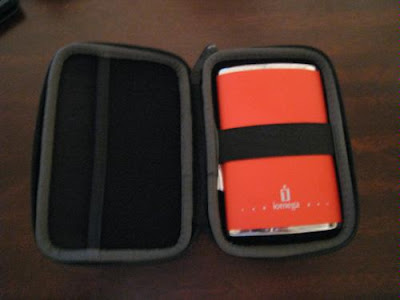
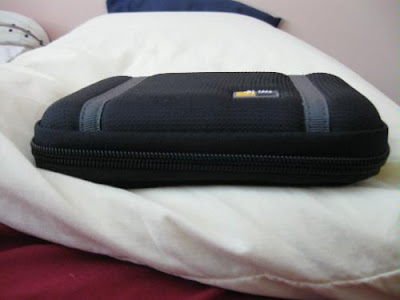
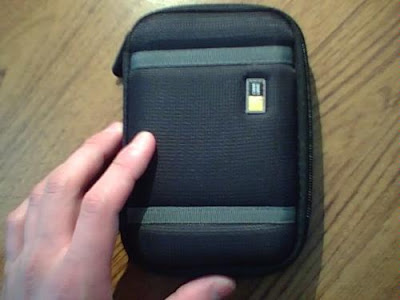
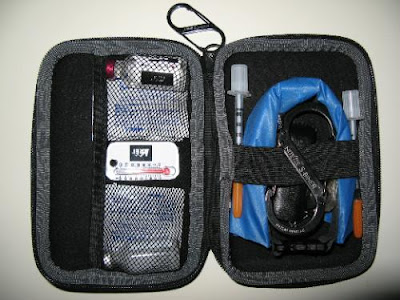
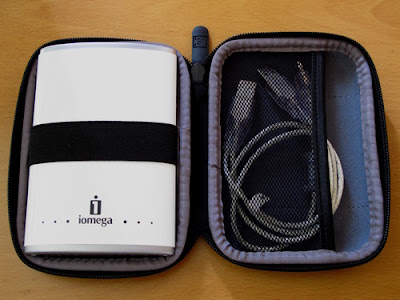

The case is well designed and made. The outer material feels durable, the inner shell soft and well padded. The overall case is well formed and seams look carefully done.
I bought this to be used with the Western Digital Passport II (black) WDXMSxxxx drives (5.1"x3.1"x0.6") and the case is a tad too big for it. The drive has a little too much wiggle room despite the elastic strap inside. I imagine the case will be better fitted for slightly bigger drives, e.g. Seagate's ST9xxxxx1U2-RK.
Technical Details
* Compact case to store or transport smaller portable hard drives
* Slimline design allows case to easily fit into any backpack or briefcase
* External Dimensions - 6.75 x 5 x 1.75 inch

Case Logic Compact Portable Hard Drive Case (Black)
Compact case to store or transport smaller portable hard drivesSlimline design allows case to easily fit into any backpack or briefcaseDurable, hardshell exterior to protect valuable dataInterior strap secures portable hard drive in placeZippered closureFits hard drives up to: 6" x 3.75" x 1.25"
Get Yours Today
More Pictures :
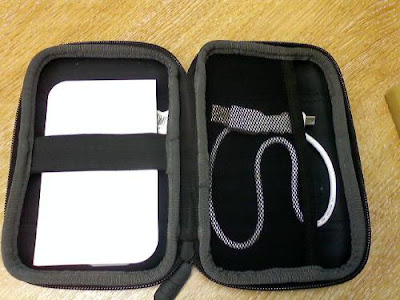
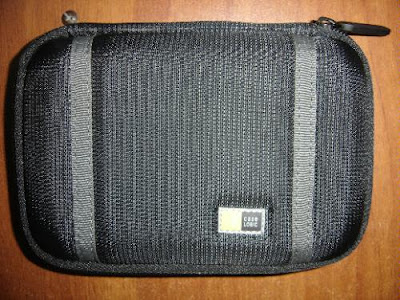

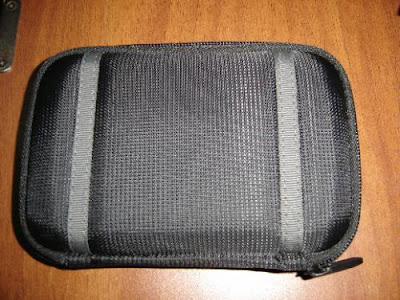






The case is well designed and made. The outer material feels durable, the inner shell soft and well padded. The overall case is well formed and seams look carefully done.
I bought this to be used with the Western Digital Passport II (black) WDXMSxxxx drives (5.1"x3.1"x0.6") and the case is a tad too big for it. The drive has a little too much wiggle room despite the elastic strap inside. I imagine the case will be better fitted for slightly bigger drives, e.g. Seagate's ST9xxxxx1U2-RK.
Technical Details
* Compact case to store or transport smaller portable hard drives
* Slimline design allows case to easily fit into any backpack or briefcase
* External Dimensions - 6.75 x 5 x 1.75 inch
Case Logic Compact Portable Hard Drive Case (Black)
Compact case to store or transport smaller portable hard drivesSlimline design allows case to easily fit into any backpack or briefcaseDurable, hardshell exterior to protect valuable dataInterior strap secures portable hard drive in placeZippered closureFits hard drives up to: 6" x 3.75" x 1.25"
Get Yours Today
More Pictures :





Friday, May 21, 2010
The Command-Line Options for the Microsoft Windows Installer Tool Msiexec.exe
The Command-Line Options for the Microsoft Windows Installer Tool Msiexec.exe
Dear friends, PLEASE read the disclaimer written by microsoft and tell me what you think.
http://support.microsoft.com/default.aspx?scid=kb;en-us;314881
Windows Installer 3.1 is available
http://support.microsoft.com/?id=893803
Windows Installer Error Messages
http://msdn.microsoft.com/library/default.asp?url=/library/en-us/msi/setup/windows_installer_error_messages.asp
PRB: "Setup Has Detected That Another Program Requires the Computer to Reboot" Error Message When You Try to Install Visual Studio .NET
http://support.microsoft.com/default.aspx?scid=kb;en-us;830608
Back to the top
APPLIES TO
* Microsoft Windows Server 2003, Enterprise Edition (32-bit x86)
* Microsoft Windows XP Professional
* Microsoft Windows XP Media Center Edition 2002
* Microsoft Windows XP Home Edition
* Microsoft Windows Server 2003, Standard Edition (32-bit x86)
* Microsoft Windows Server 2003, Web Edition
* Microsoft Windows Server 2003, Datacenter Edition (32-bit x86)
* Microsoft Windows Server 2003, Enterprise Edition for Itanium-based Systems
* Microsoft Small Business Server 2000 Standard Edition
PLEASE READ THIS DISCALIMER BY MICROSOFT!
Community Solutions Content
COMMUNITY SOLUTIONS CONTENT DISCLAIMER
MICROSOFT CORPORATION AND/OR ITS RESPECTIVE SUPPLIERS MAKE NO REPRESENTATIONS ABOUT THE SUITABILITY, RELIABILITY, OR ACCURACY OF THE INFORMATION AND RELATED GRAPHICS CONTAINED HEREIN. ALL SUCH INFORMATION AND RELATED GRAPHICS ARE PROVIDED "AS IS" WITHOUT WARRANTY OF ANY KIND. MICROSOFT AND/OR ITS RESPECTIVE SUPPLIERS HEREBY DISCLAIM ALL WARRANTIES AND CONDITIONS WITH REGARD TO THIS INFORMATION AND RELATED GRAPHICS, INCLUDING ALL IMPLIED WARRANTIES AND CONDITIONS OF MERCHANTABILITY, FITNESS FOR A PARTICULAR PURPOSE, WORKMANLIKE EFFORT, TITLE AND NON-INFRINGEMENT. YOU SPECIFICALLY AGREE THAT IN NO EVENT SHALL MICROSOFT AND/OR ITS SUPPLIERS BE LIABLE FOR ANY DIRECT, INDIRECT, PUNITIVE, INCIDENTAL, SPECIAL, CONSEQUENTIAL DAMAGES OR ANY DAMAGES WHATSOEVER INCLUDING, WITHOUT LIMITATION, DAMAGES FOR LOSS OF USE, DATA OR PROFITS, ARISING OUT OF OR IN ANY WAY CONNECTED WITH THE USE OF OR INABILITY TO USE THE INFORMATION AND RELATED GRAPHICS CONTAINED HEREIN, WHETHER BASED ON CONTRACT, TORT, NEGLIGENCE, STRICT LIABILITY OR OTHERWISE, EVEN IF MICROSOFT OR ANY OF ITS SUPPLIERS HAS BEEN ADVISED OF THE POSSIBILITY OF DAMAGES.
Dear friends, PLEASE read the disclaimer written by microsoft and tell me what you think.
http://support.microsoft.com/default.aspx?scid=kb;en-us;314881
Windows Installer 3.1 is available
http://support.microsoft.com/?id=893803
Windows Installer Error Messages
http://msdn.microsoft.com/library/default.asp?url=/library/en-us/msi/setup/windows_installer_error_messages.asp
PRB: "Setup Has Detected That Another Program Requires the Computer to Reboot" Error Message When You Try to Install Visual Studio .NET
http://support.microsoft.com/default.aspx?scid=kb;en-us;830608
Back to the top
APPLIES TO
* Microsoft Windows Server 2003, Enterprise Edition (32-bit x86)
* Microsoft Windows XP Professional
* Microsoft Windows XP Media Center Edition 2002
* Microsoft Windows XP Home Edition
* Microsoft Windows Server 2003, Standard Edition (32-bit x86)
* Microsoft Windows Server 2003, Web Edition
* Microsoft Windows Server 2003, Datacenter Edition (32-bit x86)
* Microsoft Windows Server 2003, Enterprise Edition for Itanium-based Systems
* Microsoft Small Business Server 2000 Standard Edition
PLEASE READ THIS DISCALIMER BY MICROSOFT!
Community Solutions Content
COMMUNITY SOLUTIONS CONTENT DISCLAIMER
MICROSOFT CORPORATION AND/OR ITS RESPECTIVE SUPPLIERS MAKE NO REPRESENTATIONS ABOUT THE SUITABILITY, RELIABILITY, OR ACCURACY OF THE INFORMATION AND RELATED GRAPHICS CONTAINED HEREIN. ALL SUCH INFORMATION AND RELATED GRAPHICS ARE PROVIDED "AS IS" WITHOUT WARRANTY OF ANY KIND. MICROSOFT AND/OR ITS RESPECTIVE SUPPLIERS HEREBY DISCLAIM ALL WARRANTIES AND CONDITIONS WITH REGARD TO THIS INFORMATION AND RELATED GRAPHICS, INCLUDING ALL IMPLIED WARRANTIES AND CONDITIONS OF MERCHANTABILITY, FITNESS FOR A PARTICULAR PURPOSE, WORKMANLIKE EFFORT, TITLE AND NON-INFRINGEMENT. YOU SPECIFICALLY AGREE THAT IN NO EVENT SHALL MICROSOFT AND/OR ITS SUPPLIERS BE LIABLE FOR ANY DIRECT, INDIRECT, PUNITIVE, INCIDENTAL, SPECIAL, CONSEQUENTIAL DAMAGES OR ANY DAMAGES WHATSOEVER INCLUDING, WITHOUT LIMITATION, DAMAGES FOR LOSS OF USE, DATA OR PROFITS, ARISING OUT OF OR IN ANY WAY CONNECTED WITH THE USE OF OR INABILITY TO USE THE INFORMATION AND RELATED GRAPHICS CONTAINED HEREIN, WHETHER BASED ON CONTRACT, TORT, NEGLIGENCE, STRICT LIABILITY OR OTHERWISE, EVEN IF MICROSOFT OR ANY OF ITS SUPPLIERS HAS BEEN ADVISED OF THE POSSIBILITY OF DAMAGES.
How to resolve Common "Windows Installer" Problems
How to resolve Common "Windows Installer" Problems
Author: Yuval Sinay MVP
This is a common problem i faced, here is the solution but i do not know whether it will work properly. I have tried method one with no success, but i guess microsoft need to give serious attention to Windows Installer problems.
Here is how - written by Yuval Sinay of Microsoft Support. He has Listed 12 different method to do this.
Resolve Common "Windows Installer" Problems
Method 1
Unregister Windows Installer, and then reregister Windows Installer. To do this, follow these steps:
1. On the "Start" menu, click "Run:.
2. In the "Open" box, type "msiexec /unreg", and then press ENTER.
3. On the "Start" menu, click "Run".
4. In the "Open" box, type "msiexec /regserver", and then press ENTER.
Method 2
Upgrade to Windows Installer version 2 or newer version. To do this, follow these steps:
1. Start Microsoft Internet Explorer, and then browse to the following Microsoft Web site:
http://msdn.microsoft.com/downloads
2. In the left pane tree menu, click "Setup and System Administration", and then click "Setup".
3. Click "Windows Installer", and then click the appropriate link for your operating system.
4. Click "Download" to download and install Windows Installer version 2 or newer version.
Method 3
Use Windows Installer CleanUp Utility to uninstall the failed product.
Description of the Windows Installer CleanUp Utility
http://support.microsoft.com/default.aspx?scid=kb;en-us;290301
Method 4
The Windows Installer service may disabled on the machine.
1. Go to "Start" -> "Run" , type "services.msc" and press on "Enter" button.
2. Double-click on the service named "Windows Installer".
3. Check the value in the "Startup type:" field. If it's currently set to "Disabled", then this is the
problem. Change it by selecting "Manual" from the drop-down box.
Method 5
Empty user and system "temp" folders.
1. Empty "%systemdrive%\temp" folder.
2. Empty "%systemdrive%\%windir%\temp" folder.
3. Empty "%systemdrive%\Documents and Settings\%username%\Local Settings\Temp".
Method 6
Enable Windows Installer Logging and call to PSS support.
How to Enable Windows Installer Logging
http://support.microsoft.com/default.aspx?kbid=223300
How to Enable Windows Installer Logging in Windows XP
http://support.microsoft.com/default.aspx?scid=kb;EN-US;314852
Method 7
Check correct DCOM and System permissions:
http://support.microsoft.com/?id=319624
Method 8
If you just upgrade Windows XP workstation to service pack 2 and the windows installer
problem appear only after this upgrade, please review the following knowledgebase:
http://support.microsoft.com/default.aspx?scid=kb;en-us;885894
Method 9
Check that the installation path length and environment variables length are execute
255 characters
Method 10
If you get the message error "Error 1628: Failed to complete script based install"
And followed the instruction above and it didn’t resolve the problem and you just create fresh
installation packet by using InstallShiled tool, please disable "Cache installation on local machine"
option during the installation packet create process.
Method 11
Check if there pending installation/s:
Warning: You should only edit these registry entries if you really know what you're doing. Back up your hard disk first.
a. Empty "InProgress" Registry Key
Check the following registry key:
HKLM\Software\Microsoft\Windows\CurrentVersion\Installer\InProgress
and clean any entries that you find.
b. Empty/Rename "PendingFileRenameOperations" Registry Key:
Check the following registry key:
HKLM\System\CurrentControlSet\Control\Session Manager\PendingFileRenameOperations
and clean any entries that you find.
Method 12
Obtain update MSI Package from the software manufacture.
Article : How to resolve Common "Windows Installer" Problems by Yuval Sinay from :
http://support.microsoft.com/kb/555175
Author: Yuval Sinay MVP
This is a common problem i faced, here is the solution but i do not know whether it will work properly. I have tried method one with no success, but i guess microsoft need to give serious attention to Windows Installer problems.
Here is how - written by Yuval Sinay of Microsoft Support. He has Listed 12 different method to do this.
Resolve Common "Windows Installer" Problems
Method 1
Unregister Windows Installer, and then reregister Windows Installer. To do this, follow these steps:
1. On the "Start" menu, click "Run:.
2. In the "Open" box, type "msiexec /unreg", and then press ENTER.
3. On the "Start" menu, click "Run".
4. In the "Open" box, type "msiexec /regserver", and then press ENTER.
Method 2
Upgrade to Windows Installer version 2 or newer version. To do this, follow these steps:
1. Start Microsoft Internet Explorer, and then browse to the following Microsoft Web site:
http://msdn.microsoft.com/downloads
2. In the left pane tree menu, click "Setup and System Administration", and then click "Setup".
3. Click "Windows Installer", and then click the appropriate link for your operating system.
4. Click "Download" to download and install Windows Installer version 2 or newer version.
Method 3
Use Windows Installer CleanUp Utility to uninstall the failed product.
Description of the Windows Installer CleanUp Utility
http://support.microsoft.com/default.aspx?scid=kb;en-us;290301
Method 4
The Windows Installer service may disabled on the machine.
1. Go to "Start" -> "Run" , type "services.msc" and press on "Enter" button.
2. Double-click on the service named "Windows Installer".
3. Check the value in the "Startup type:" field. If it's currently set to "Disabled", then this is the
problem. Change it by selecting "Manual" from the drop-down box.
Method 5
Empty user and system "temp" folders.
1. Empty "%systemdrive%\temp" folder.
2. Empty "%systemdrive%\%windir%\temp" folder.
3. Empty "%systemdrive%\Documents and Settings\%username%\Local Settings\Temp".
Method 6
Enable Windows Installer Logging and call to PSS support.
How to Enable Windows Installer Logging
http://support.microsoft.com/default.aspx?kbid=223300
How to Enable Windows Installer Logging in Windows XP
http://support.microsoft.com/default.aspx?scid=kb;EN-US;314852
Method 7
Check correct DCOM and System permissions:
http://support.microsoft.com/?id=319624
Method 8
If you just upgrade Windows XP workstation to service pack 2 and the windows installer
problem appear only after this upgrade, please review the following knowledgebase:
http://support.microsoft.com/default.aspx?scid=kb;en-us;885894
Method 9
Check that the installation path length and environment variables length are execute
255 characters
Method 10
If you get the message error "Error 1628: Failed to complete script based install"
And followed the instruction above and it didn’t resolve the problem and you just create fresh
installation packet by using InstallShiled tool, please disable "Cache installation on local machine"
option during the installation packet create process.
Method 11
Check if there pending installation/s:
Warning: You should only edit these registry entries if you really know what you're doing. Back up your hard disk first.
a. Empty "InProgress" Registry Key
Check the following registry key:
HKLM\Software\Microsoft\Windows\CurrentVersion\Installer\InProgress
and clean any entries that you find.
b. Empty/Rename "PendingFileRenameOperations" Registry Key:
Check the following registry key:
HKLM\System\CurrentControlSet\Control\Session Manager\PendingFileRenameOperations
and clean any entries that you find.
Method 12
Obtain update MSI Package from the software manufacture.
Article : How to resolve Common "Windows Installer" Problems by Yuval Sinay from :
http://support.microsoft.com/kb/555175
Subscribe to:
Comments (Atom)
